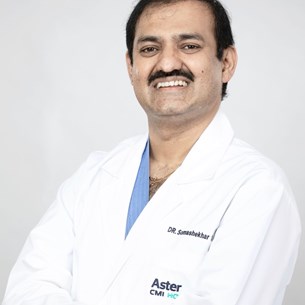Meeting
2022 ASCO Annual Meeting

Manipal Comprehensive Cancer Center, Bangalore, India
S.P. Somashekhar , S.V.S. Deo , Rupinder Sekhon , Subramanyeshwar Rao Thammineedi , Harit Chaturvedi , Ganesh M S , Rama Joshi , Kalpana Kothari , Amit Gandhi , Ashwin K. Rajgopal , M D Ray , R Rajagopalan Iyer , Hemanth G N , Rohit Kumar
Background: Improved long-term results can be achieved in advanced epithelial ovarian cancer (EOC) patients using optimal cytoreductive surgery (CRS) with hyperthermic intraperitoneal chemotherapy (HIPEC). Methods: Indian society of peritoneal surface malignancy (ISPSM) is a registered body which maintains prospective data of 26 centers across India who perform CRS –HIPEC. From February 2017 until January 2022, 1470 patients with advanced EOC were treated with CRS-HIPEC. He general practice patterns and the oncological outcomes in terms of progression free survival (PFS) and overall survival (OS) & post-operative morbidity and mortality is reported. Results: Upfront (n = 156), interval (n = 645) and recurrent (n = 669) cytoreductions were performed based on the timeline at presentation. Mean age 54.5±10.74, PCI 13. 6±5.2, duration of surgery 10.6±1.h hrs. 36.4% had total peritonectomy, 12.7% had multivisceral resection, 41.8%had bowel resections and stoma rate was 7.4%. 60.3% had semiopen HIPEC, 83.1% used cisplatin for HIPEC and 83.1 % had HIPEC for 90 minutes. Overall G3-G5 morbidity was 25.4% with major ones being post-operative intra-abdominal collection (21.8%), electrolyte imbalance (16.4%), pulmonary (16.4%) followed by hematological (12.7%). Surgical morbidity was more in upfront cytoreduction group compared to interval group (20% versus 13.5%) and recurrent group (20% versus 15%), respectively. The 30 day mortality was 3.8%. With a median follow-up of 46 months, median PFS was 33 months in primary (upfront plus interval) group and 16 months in recurrent cytoreduction group. Median OS was not achieved in both primary and recurrent groups (4 year OS rates: 60 and 55%, respectively). Conclusions: This prospective database provides a collation and audit of the management of advanced epithelial ovarian cancer with CRS HIPEC in multiple centers registered under ISPSM. In advanced EOC patients, CRS plus HIPEC offers potential benefits in PFS and OS rates, with acceptable rates of morbidity and mortality and can be practiced even in resource constrained setting.
Disclaimer
This material on this page is ©2024 American Society of Clinical Oncology, all rights reserved. Licensing available upon request. For more information, please contact licensing@asco.org
2022 ASCO Annual Meeting
Poster Session
Gynecologic Cancer
Gynecologic Cancer
Biologic Correlates
J Clin Oncol 40, 2022 (suppl 16; abstr 5525)
10.1200/JCO.2022.40.16_suppl.5525
5525
404
Abstract Disclosures
2015 ASCO Annual Meeting
First Author: S.P. Somashekhar
2020 ASCO Virtual Scientific Program
First Author: Oliver Zivanovic
2020 ASCO Virtual Scientific Program
First Author: S.P. Somashekhar
2020 ASCO Virtual Scientific Program
First Author: Ruby M. van Stein